The Best 4×10 Speakers Get Your Stereo Sounding Better
When you think about the evolution of vehicle design, things like styling, safety, and technology have changed in the most obvious ways since the automobile was created. But that evolution has also forced automakers to change how they think about the more minor elements of a car or truck’s design, including the speakers that play the music you listen to as you drive.
If you drive a classic vehicle from the 1960s, for example, you may find it hard to find speakers to replace the ones that were installed at the factory. Round speakers are common in factory sound systems in modern cars, and the 6×9 size is popular with aftermarket buyers. However, many vehicles considered classics came with speakers in a 4×10 size that is now relatively difficult to find.
The 4×10 speaker size can also be useful if you’re building a custom sound system. Their long, narrow shape allows them to fill a space where a more common 6×9 speaker would be too wide, or where a 3.5-inch round one might look out of place.
For more information on the best 4×10 speakers, refer to our table of contents.
Table of contents
- 1. Editor's Pick: Cerwin Vega Mobile HED Series
- 2. Best for Single Unit: Boss Audio BRS Series
- 3. Kicker KS Series
- 4. Memphis Audio Power Reference Coaxial Speakers
- 5. Boss Audio Full Range 3-Way Speakers
- What are some vehicles that use 4x10 speakers?
- What if my vintage vehicle only has one speaker?
- How do you choose the right 4x10 speaker for your vehicle?
- Can you install 4x10 speakers as part of a larger sound system?
1. Editor's Pick: Cerwin Vega Mobile HED Series
Despite being sold in pairs, this coaxial speaker is not a lot more expensive than the products in this list that come as singles, making it one of the best values on our list. That value and Cerwin Vega’s reputable name are the reasons we recommend this option to you as our Editor's Pick.
A vented-airflow stamped steel basket frame supports a graphite-injected and reinforced spun cone, which Cerwin Vega says provides the versatility to faithfully reproduce your music, no matter what genres you listen to. Cerwin Vega says this 4x10 speaker is rated for a maximum of 640 watts when installed in pairs, but its RMS power handling is much more modest, at 100 watts per pair.
Frequency response is 75 Hz to 20 kHz, and resistance is a standard 4 ohms. This recommendation boasts a 93 dB sensitivity rating, so it promises to give you more volume than many of the other speakers that we've picked. You’ll need a minimum of 2.47 inches of mounting depth behind or beneath this speaker, and a cutout measuring 9.45 inches by 3.66 inches.
Pros | Generous peak power handling, great pricing for a speaker sold in pairs, attractive design |
Cons | Low-frequency performance is lacking, it’s not obvious which wiring connection is positive and which is negative |
2. Best for Single Unit: Boss Audio BRS Series
Boss Audio sells this recommendation individually, so you can buy just one if you need a replacement in a classic car still fitted with a mono, single-speaker sound system. As with other members of the BRS family of speakers, the cone is made from polyurethane, which promises good durability and a long service life. It is driven by a high-temperature voice coil and supported with a foam surround, so you can enjoy long stints of high-volume listening without fear of damaging this speaker.
All of those components are packaged in a stamped steel basket that allows the speaker to reproduce your music cleanly and clearly. Note that this option has a single driver: it is not a coaxial speaker with a tweeter or mid-range drivers suspended over the main cone.
It's capable of handling a maximum of 120 watts, but its RMS rating is 60 watts. Its frequency range is 70 Hz to 20 kHz, sensitivity is 84 dB, and it is rated for 4 ohms of resistance. Mounting depth is 2.3 inches, which should allow for easy fitment in most vehicles. It's also backed by a three-year warranty.
Pros | Great price, a good entry-level speaker if you want to maintain the authenticity of a vintage car |
Cons | Some buyers complained about poor longevity, audiophiles may not be happy with the sound quality |
3. Kicker KS Series
Kicker’s KS series approaches the high end of the company's range, so you can enjoy smooth and subtle sound reproduction even at high volume levels. With that said, this option is not a particularly high-powered speaker. Kicker says it’s rated for anywhere between 15 and 75 watts RMS, but doesn’t list a peak power figure. An 88 dB sensitivity rating puts this speaker’s efficiency near the bottom of the pack on our list.
The company says this speaker's woofer is made of tough polypropylene and is supported by a durable rubber surround. The tweeter sports a silk dome designed to bring out the high-frequency details in your music. With a frequency range of 45 Hz to 20 kHz, you’ll also be able to hear the lows better than with most of the other products in this list.
In top-mount applications, you’ll need less than 2.5 inches of mounting depth to install this option. It’s sold without grilles, so consider this speaker if you’re after better sound but want to maintain your vehicle’s factory appearance.
Pros | A good choice to replace factory speakers, wide frequency response |
Cons | At the expensive end of the spectrum, not intended for high-powered applications |
4. Memphis Audio Power Reference Coaxial Speakers
Memphis Audio calls this option the “perfect factory replacement car speaker,” with this 4x10 model being one of a range of sizes. If you’re a purist who prefers to stick to one brand of speaker throughout your vehicle, Memphis Audio makes that easy to do.
This recommendation is a 2-way coaxial speaker that suspends a small PEI dome tweeter over the main cone. Notably, the tweeter pivots so you can point its high-frequency output where you think it sounds best in your car or truck. A 13-ounce magnet drives the black-on-black M-Cone, which is held in place by a polyurethane surround.
RMS power rating is 50 watts, and its maximum power handling capability is 100 watts, which is among the more modest figures in this list. Therefore, we’d recommend this speaker if you’ll be running it directly off the head unit as opposed to a powerful standalone amplifier. This speaker would also be well suited to your vehicle if you rarely play bass-heavy music.
Sensitivity is rated at 89 dB, and you’ll need 2.5 inches of clearance for a clean install.
Pros | Straightforward design, plain grille will blend in nicely in most vehicles |
Cons | Large magnet may require minor vehicle modifications, among the more expensive 4x10 speakers available |
5. Boss Audio Full Range 3-Way Speakers
We’re rounding out our list of the best 4x10 speakers with this option from Boss Audio, which we recommend if you’re looking for one with a lot of features at an attractive price. As the sole 3-way speaker to make our list, it places a 1-inch dome and a tweeter above the woofer, promising solid reproduction of your music’s midrange sounds. It’s also one of the most powerful speakers on our list, with a 200-watt RMS power rating, and maximum power handling of 400 watts.
The company uses poly injection construction and a rubber surround for the speaker's woofer, while the midrange is made of polyimide. Driven by high-temperature voice coils, those drivers are designed to let you enjoy your music at high volume without fear of damage. Meanwhile, the piezoelectric tweeter can be used without a crossover, which makes for more straightforward integration into your sound system.
Despite its three-way design, this recommendation is designed to shine in the midrange, with frequency response of 100 Hz to 18 kHz. A 90 dB sensitivity rating is also mid-pack out of our recommendations. Like other Boss speakers, you'll get a three-year warranty.
Pros | Generous warranty, high power capability, bold design |
Cons | Fans of big bass and crystal-clear highs may be disappointed, some buyers complain of variable build quality |
What are some vehicles that use 4x10 speakers?
While not common in modern vehicles, many vintage cars and trucks built in the 1960s used 4x10 speakers, especially those with one or two speakers mounted in the dash or the rear deck.
None of the speakers on our list are designed to preserve the authentic look of a speaker made in the 1960s. However, they will almost certainly give you better sound than the ones installed in your vintage vehicle at the factory.
What if my vintage vehicle only has one speaker?
Some 4x10 speaker manufacturers acknowledge that you will only need one speaker for certain applications and sell their products in singles. However, most of the speakers we found are sold in pairs, but most of these are quite affordable, so even if you want to preserve your vehicle’s mono single-speaker radio, we’d recommend buying a pair and keeping the second speaker as a spare.
How do you choose the right 4x10 speaker for your vehicle?
First, you need to know some basic specifications of your sound system, like its power output in watts, and the resistance/impedance rating of its speaker connections.
A speaker’s continuous, or RMS, power rating dictates how many watts you can run through it for extended periods. The peak power rating indicates how much power the speaker can handle for short bursts of high volume.
Resistance (also known as impedance) is measured in ohms. A speaker with a higher resistance or impedance rating will require more wattage to produce a given amount of volume.
Sensitivity measures a speaker’s efficiency at converting your car radio’s wattage into sound. The higher the sensitivity figure is, the more volume you’ll get at a given wattage.
You’ll also need to take into account the physical space where the speaker will be installed. Measure how much clearance there is below the mounting surface to make sure the speakers you buy will fit your vehicle without the need for modifications.
Can you install 4x10 speakers as part of a larger sound system?
Yes, and if you want the best possible sound quality, you should back up your 4x10s with other more specialized speakers.
As a rule, the 4x10 speakers that made the cut for our list are best at reproducing midrange frequencies. If you want to bring out the full frequency range in your music, you should also install a set of aftermarket tweeters for the high end and a subwoofer (or two) to handle heavy bass notes.
We are committed to finding, researching, and recommending the best products. We earn commissions from purchases you make using the retail links in our product reviews. Learn more about how this works.
Photo credit: Andrey Myagkov / Shutterstock.com
More by Chris Chase



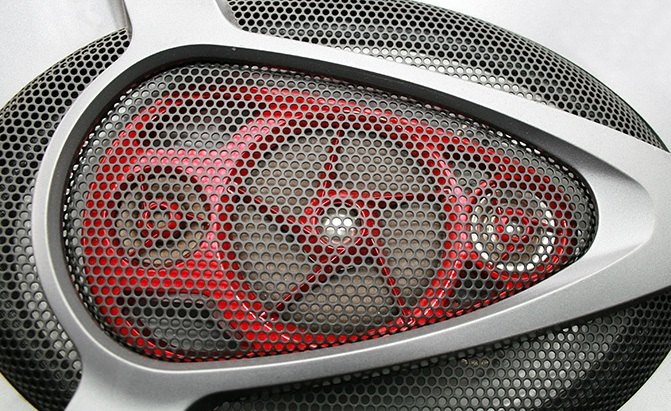


















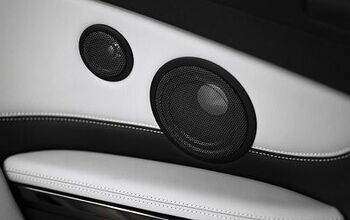



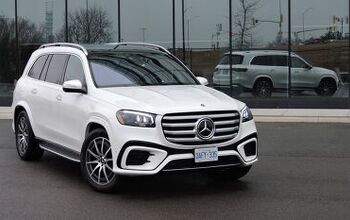

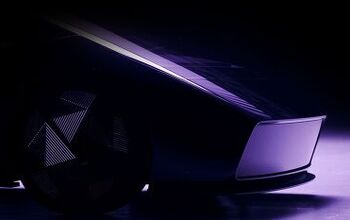

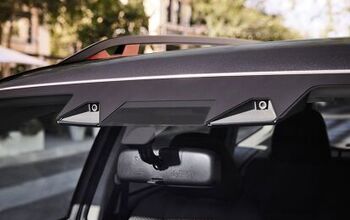




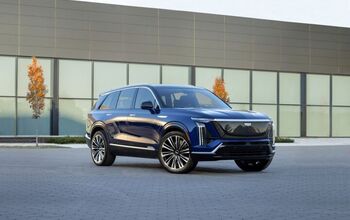

Comments
Join the conversation